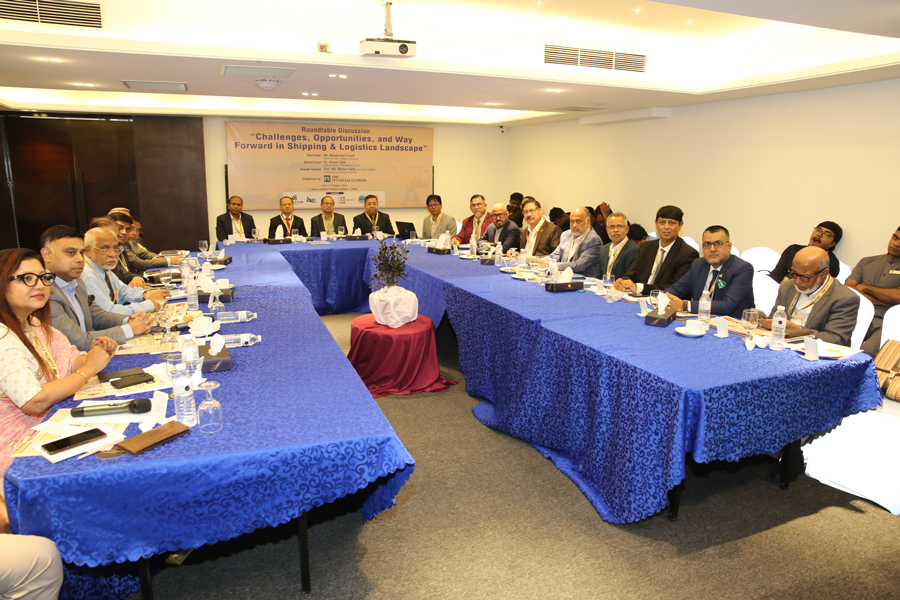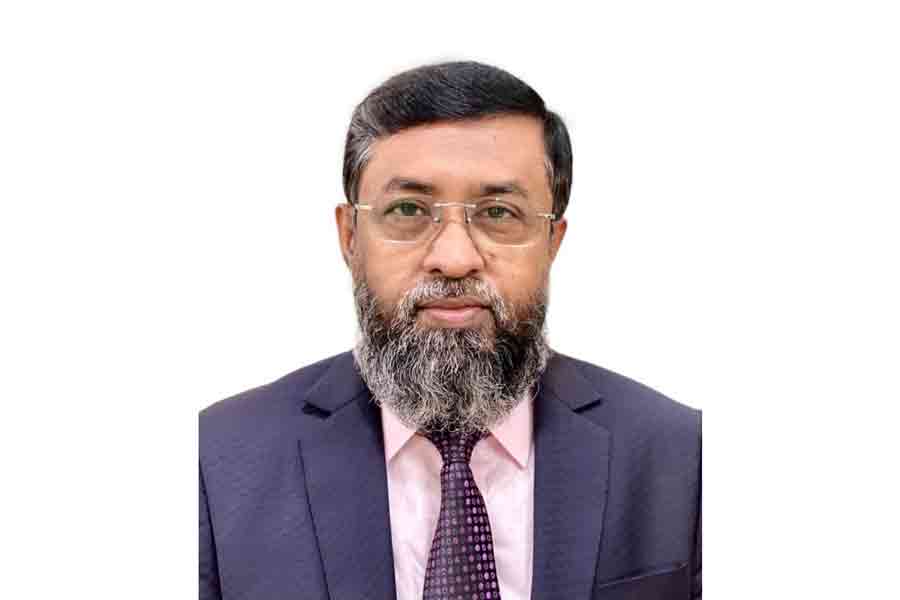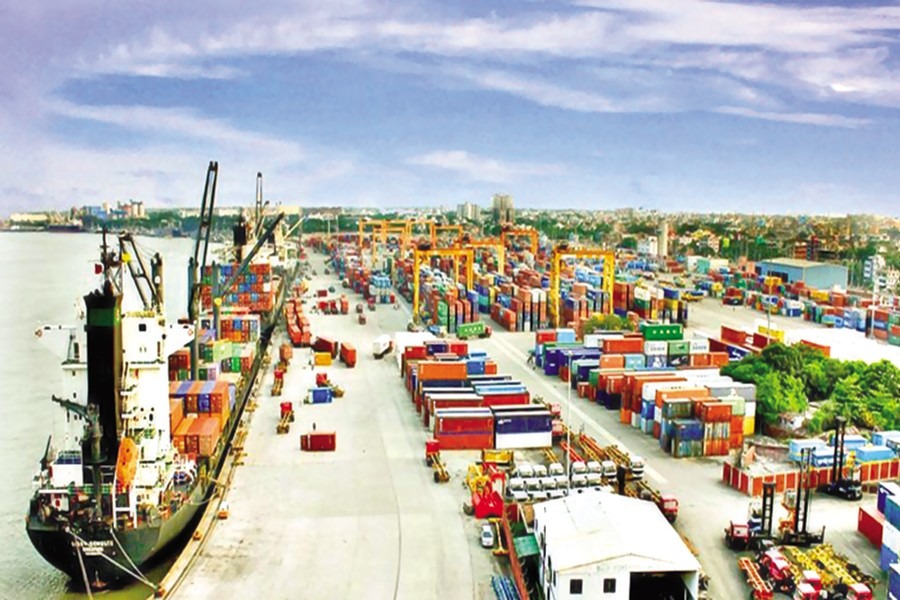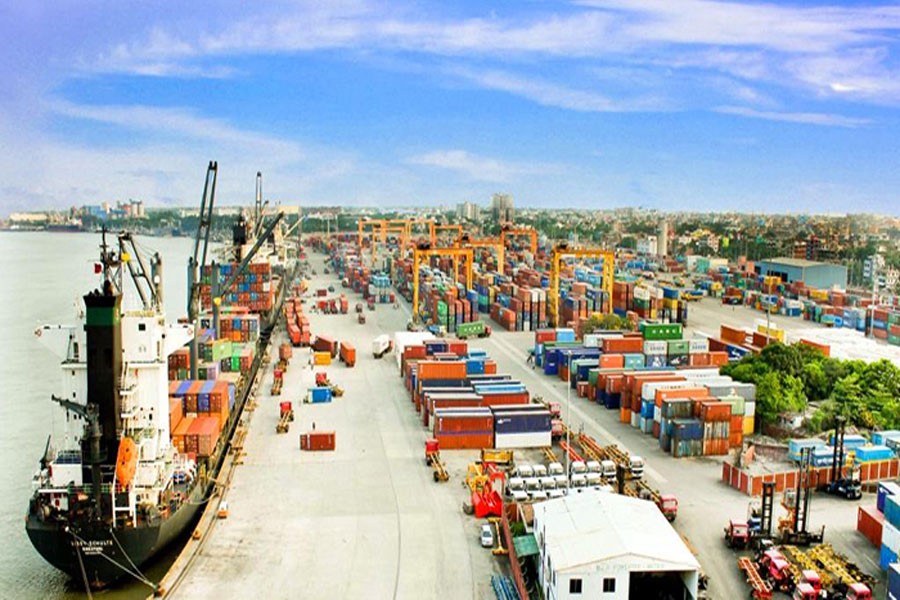Saif
Senior Member
- Joined
- Jan 24, 2024
- Messages
- 15,482
- Nation

- Axis Group

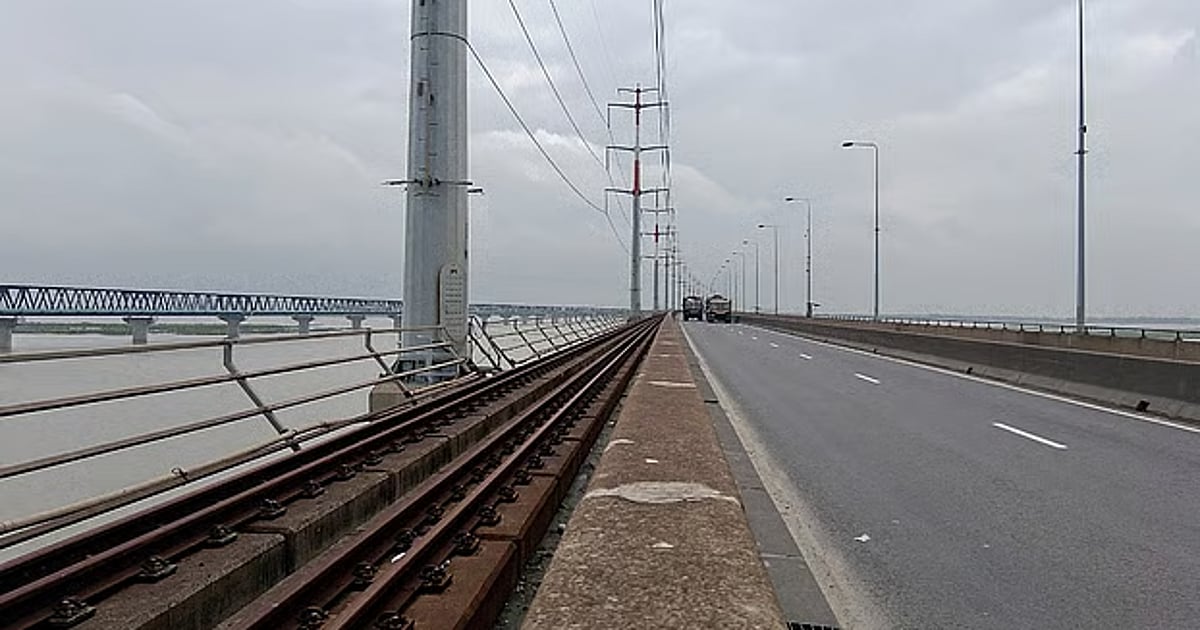
Road over Jamuna Bridge to be widened by 11ft
The Bridges Division has planned to convert the additional space into roadways which will further ease the journey towards the northern part of the country
Road over Jamuna Bridge to be widened by 11ft
Anowar Hossain Dhaka
Published: 12 Aug 2025, 19: 57

The railway track on the Jamuna Bridge Prothom Alo
A new rail bridge has been launched over river Jamuna. Trains no longer use the Jamuna Bridge. Therefore the authorities have decided to remove the railway track on the Jamuna Bridge. It will create an additional 11 feet space on the bridge.
The Bridges Division has planned to convert the additional space into roadways which will further ease the journey towards the northern part of the country.
Sources in the Bridges Division, the regulatory body of the Jamuna Bridge, said that they will have to do some additional work to extend the road up to the space used for the railway track. It requires funds. The interim government has agreed to the plan. Experts have been appointed to determine a suitable process for road extension, assess the cost and for design. However, this time only local experts have been appointed. The six engineering and technology universities are also involved in the process.
Speaking to Prothom Alo, Bridges Division chief engineer Kazi Mohammad Ferdaus said the work on road extension would start after getting expert opinion and their design. He hoped to start the work by the next six months.
A new railway bridge over the Jamuna River (the Jamuna Railway Bridge) was opened last February. Following this, train operations on the railway track of the Jamuna Bridge were stopped.
The 4.8-kilometre-long railway bridge, built parallel to the Jamuna Bridge, is the longest railway bridge in Bangladesh. It has two dual-gauge, double-track lines. The construction cost was about Tk 167.81 billion. The bridge was built with funding from the Government of Bangladesh and the Japan International Cooperation Agency (JICA).

The new railway bridge can be seen from the Jamuna Bridge Prothom Alo
The road bridge over the Jamuna River was opened in 1998. According to the Bridges Division, the bridge was not originally designed to accommodate trains. Later, the then prime minister Sheikh Hasina instructed that a railway track be added to the bridge. The design was modified, and a railway track was installed on one side of the Jamuna Bridge, narrowing the roadway slightly.
In 2006, cracks appeared on the bridge. After that, the speed of trains on the bridge was reduced, and heavy freight trains were barred from using it. To facilitate the movement of passenger and freight trains to the north, a project to build a new railway bridge over the Jamuna River was undertaken in 2016.
Jamuna Bridge to get back original shape
The Jamuna Bridge has four lanes. According to the Bridges Division, the width of its carriageway does not meet international standards. Compared to the Padma Bridge and other new bridges in the country, the Jamuna Bridge has a much narrower carriageway. As a result, long traffic tailbacks form on both ends of the bridge not only at weekends or the start of the week, but also during Eid and other major festivals.
Work on road extension would start after getting expert opinion and their design. He hoped to start the work by the next six months---Kazi Mohammad Ferdaus, chief engineer, Bridges Division.
Currently, an average of 22,000 vehicles cross the Jamuna Bridge daily. During last Eid-ul-Azha, a record of more than 64,000 vehicles crossed the bridge in a single day.
Experts say that under ideal standards, a four-lane bridge or road should have a divider in the middle, with each carriageway at least 24 feet wide. However, the current carriageway width of the Jamuna Bridge is just over 41 feet, meaning each direction is a little over 20 feet wide. Once the railway track is removed from the bridge, an additional 11.5 feet of space will be available. By shifting the central divider slightly, it will be possible to create nearly six extra feet of carriageway on each side.
On the other hand, the four-lane highway on either side of the Jamuna Bridge is 24 feet wide in each direction, allowing two vehicles to pass side by side with room to spare. In contrast, it is difficult for two vehicles to travel side by side on the Jamuna Bridge. According to the bridge division, there is also no walkway on the bridge for maintenance work or for staff movement. As a result, vehicles coming from the wider highway on both sides often get stuck at the bridge’s entry point because the bridge is narrower than the highway. In addition, vehicle speed slows slightly at the toll plaza.

The Jamuna Railway Bridge File photo
Officials at the bridge division said the Padma Bridge does not have this problem. Each carriageway on the bridge is more than 31 feet wide, with ample space on the sides for easy maintenance work. At present, all major bridges in the country—both existing and under construction—have a median in the middle, with a minimum width of 26 feet for each carriageway. Some bridges have even wider carriageways.
Railway track being removed
In the last week of June, work began to remove the railway track from the Sirajganj end of the Jamuna Bridge. The nuts and bolts were removed first, and now the railway track is being dismantled. Railway sources said the removal work could be completed within the next three months.
Last month, Sheikh Moinuddin, the chief advisor’s special assistant for the Ministry of Road Transport and Bridges and Railways, inspected the expansion work of the Jamuna Bridge’s carriageway and the removal of the railway line. He gave instructions for the swift removal of the railway track.
Once the road on the Jamuna Bridge is widened, vehicles will be able to move in line with the wide highways on either side. This will make travel across the Jamuna Bridge easier and reduce traffic congestion at both ends of the bridge---Sheikh Moinuddin, Special assistant to the chief adviser.
Ahmad Hossain Masum, chief engineer of western region of railways, told Prothom Alo that during the inspection by the chief advisor’s special assistant, officials from the bridge division and the ministry of railways were present. They discussed the work plan for the expansion of the Jamuna Bridge’s road. They expect to complete the railway line removal within the next three months. Meanwhile, other preparations by the bridge division will also be finalised.
It was known at the time of the Jamuna Rail Bridge project that once the new bridge was built, trains would no longer run on the road bridge. Therefore, the design and necessary preparations for the expansion of the Jamuna Road Bridge could have been made in advance, but that was not done.
The Bridge’s Division said that about two years ago it had sought the government’s opinion on expanding the road on the Jamuna Bridge’s railway track. However, the then Awami League government showed no interest in the matter.
Since the then Prime Minister Sheikh Hasina had added the railway track to the Jamuna Bridge, she was against its removal. Because of this, the bridge division did not proceed further. But after the interim government took office, when the bridge division again submitted a proposal, it was approved by Muhammad Fouzul Kabir Khan, adviser to the Ministry of Road Transport, Bridges and Railways. Soon after, at the beginning of this year, the process of appointing consultants for design preparation began.
Sheikh Moinuddin, special assistant to the chief adviser, told Prothom Alo that once the road on the Jamuna Bridge is widened, vehicles will be able to move in line with the wide highways on either side. This will make travel across the Jamuna Bridge easier and reduce traffic congestion at both ends of the bridge.
Anowar Hossain Dhaka
Published: 12 Aug 2025, 19: 57
The railway track on the Jamuna Bridge Prothom Alo
A new rail bridge has been launched over river Jamuna. Trains no longer use the Jamuna Bridge. Therefore the authorities have decided to remove the railway track on the Jamuna Bridge. It will create an additional 11 feet space on the bridge.
The Bridges Division has planned to convert the additional space into roadways which will further ease the journey towards the northern part of the country.
Sources in the Bridges Division, the regulatory body of the Jamuna Bridge, said that they will have to do some additional work to extend the road up to the space used for the railway track. It requires funds. The interim government has agreed to the plan. Experts have been appointed to determine a suitable process for road extension, assess the cost and for design. However, this time only local experts have been appointed. The six engineering and technology universities are also involved in the process.
Speaking to Prothom Alo, Bridges Division chief engineer Kazi Mohammad Ferdaus said the work on road extension would start after getting expert opinion and their design. He hoped to start the work by the next six months.
A new railway bridge over the Jamuna River (the Jamuna Railway Bridge) was opened last February. Following this, train operations on the railway track of the Jamuna Bridge were stopped.
The 4.8-kilometre-long railway bridge, built parallel to the Jamuna Bridge, is the longest railway bridge in Bangladesh. It has two dual-gauge, double-track lines. The construction cost was about Tk 167.81 billion. The bridge was built with funding from the Government of Bangladesh and the Japan International Cooperation Agency (JICA).
The new railway bridge can be seen from the Jamuna Bridge Prothom Alo
The road bridge over the Jamuna River was opened in 1998. According to the Bridges Division, the bridge was not originally designed to accommodate trains. Later, the then prime minister Sheikh Hasina instructed that a railway track be added to the bridge. The design was modified, and a railway track was installed on one side of the Jamuna Bridge, narrowing the roadway slightly.
In 2006, cracks appeared on the bridge. After that, the speed of trains on the bridge was reduced, and heavy freight trains were barred from using it. To facilitate the movement of passenger and freight trains to the north, a project to build a new railway bridge over the Jamuna River was undertaken in 2016.
Jamuna Bridge to get back original shape
The Jamuna Bridge has four lanes. According to the Bridges Division, the width of its carriageway does not meet international standards. Compared to the Padma Bridge and other new bridges in the country, the Jamuna Bridge has a much narrower carriageway. As a result, long traffic tailbacks form on both ends of the bridge not only at weekends or the start of the week, but also during Eid and other major festivals.
Work on road extension would start after getting expert opinion and their design. He hoped to start the work by the next six months---Kazi Mohammad Ferdaus, chief engineer, Bridges Division.
Currently, an average of 22,000 vehicles cross the Jamuna Bridge daily. During last Eid-ul-Azha, a record of more than 64,000 vehicles crossed the bridge in a single day.
Experts say that under ideal standards, a four-lane bridge or road should have a divider in the middle, with each carriageway at least 24 feet wide. However, the current carriageway width of the Jamuna Bridge is just over 41 feet, meaning each direction is a little over 20 feet wide. Once the railway track is removed from the bridge, an additional 11.5 feet of space will be available. By shifting the central divider slightly, it will be possible to create nearly six extra feet of carriageway on each side.
On the other hand, the four-lane highway on either side of the Jamuna Bridge is 24 feet wide in each direction, allowing two vehicles to pass side by side with room to spare. In contrast, it is difficult for two vehicles to travel side by side on the Jamuna Bridge. According to the bridge division, there is also no walkway on the bridge for maintenance work or for staff movement. As a result, vehicles coming from the wider highway on both sides often get stuck at the bridge’s entry point because the bridge is narrower than the highway. In addition, vehicle speed slows slightly at the toll plaza.
The Jamuna Railway Bridge File photo
Officials at the bridge division said the Padma Bridge does not have this problem. Each carriageway on the bridge is more than 31 feet wide, with ample space on the sides for easy maintenance work. At present, all major bridges in the country—both existing and under construction—have a median in the middle, with a minimum width of 26 feet for each carriageway. Some bridges have even wider carriageways.
Railway track being removed
In the last week of June, work began to remove the railway track from the Sirajganj end of the Jamuna Bridge. The nuts and bolts were removed first, and now the railway track is being dismantled. Railway sources said the removal work could be completed within the next three months.
Last month, Sheikh Moinuddin, the chief advisor’s special assistant for the Ministry of Road Transport and Bridges and Railways, inspected the expansion work of the Jamuna Bridge’s carriageway and the removal of the railway line. He gave instructions for the swift removal of the railway track.
Once the road on the Jamuna Bridge is widened, vehicles will be able to move in line with the wide highways on either side. This will make travel across the Jamuna Bridge easier and reduce traffic congestion at both ends of the bridge---Sheikh Moinuddin, Special assistant to the chief adviser.
Ahmad Hossain Masum, chief engineer of western region of railways, told Prothom Alo that during the inspection by the chief advisor’s special assistant, officials from the bridge division and the ministry of railways were present. They discussed the work plan for the expansion of the Jamuna Bridge’s road. They expect to complete the railway line removal within the next three months. Meanwhile, other preparations by the bridge division will also be finalised.
It was known at the time of the Jamuna Rail Bridge project that once the new bridge was built, trains would no longer run on the road bridge. Therefore, the design and necessary preparations for the expansion of the Jamuna Road Bridge could have been made in advance, but that was not done.
The Bridge’s Division said that about two years ago it had sought the government’s opinion on expanding the road on the Jamuna Bridge’s railway track. However, the then Awami League government showed no interest in the matter.
Since the then Prime Minister Sheikh Hasina had added the railway track to the Jamuna Bridge, she was against its removal. Because of this, the bridge division did not proceed further. But after the interim government took office, when the bridge division again submitted a proposal, it was approved by Muhammad Fouzul Kabir Khan, adviser to the Ministry of Road Transport, Bridges and Railways. Soon after, at the beginning of this year, the process of appointing consultants for design preparation began.
Sheikh Moinuddin, special assistant to the chief adviser, told Prothom Alo that once the road on the Jamuna Bridge is widened, vehicles will be able to move in line with the wide highways on either side. This will make travel across the Jamuna Bridge easier and reduce traffic congestion at both ends of the bridge.

